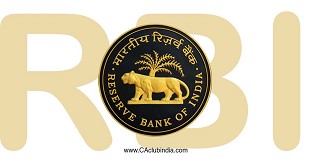Articles by Affluence Advisory
India's Simple Agreement for Future Equity (SAFE): Navigating a New Frontier in Startup Funding
Affluence Advisory 12 November 2025 at 06:36India's startup funding landscape is evolving with instruments like SAFE and its Indian version, iSAFE. Unlike traditional equity or convertible notes, iSAFE allows founders to raise funds quickly without early valuations, while staying compliant under Indian law.
Beyond the Bank: How NBFCs are Reshaping Study Abroad Loans in India
Affluence Advisory 11 November 2025 at 06:42Non-Banking Financial Companies (NBFCs), registered under the Companies Act 2013 and regulated by the RBI, have revolutionized India’s education finance landscape.
ODI under the Automatic Route vs Approval Route - Practical Insights
Affluence Advisory 06 November 2025 at 06:47Explore how the RBI's New Overseas Investment Regime simplifies outbound investments through the Automatic Route while tightening post-investment compliance.
Groww IPO: A Landmark Moment in India's ESOP Evolution
Affluence Advisory 05 November 2025 at 06:31Groww's upcoming IPO, opening from November 4-7, 2025, marks a turning point in India's ESOP ecosystem, unlocking employee wealth worth Rs 2,400-2,500 crore and showcasing how equity ownership is reshaping corporate wealth creation.
RBI Draft Lending to Related Parties Directions 2025: Key Takeaways for NBFCs
Affluence Advisory 03 November 2025 at 06:27The Reserve Bank of India, on October 1, 2025, issued the draft "Non-Banking Financial Companies - Lending to Related Parties Directions, 2025" to strengthen governance, transparency, and disclosure in NBFC lending to related parties.
Legal Entity Identifier LEI Understanding Its Purpose and Applicability in India
Affluence Advisory 01 November 2025 at 06:41Learn everything about the Legal Entity Identifier (LEI), a 20-character global identification code for companies and organizations engaged in financial transactions.
SEBI Restricts Mutual Funds from Pre-IPO Placements: What You Need to Know
Affluence Advisory 29 October 2025 at 06:36SEBI has barred mutual funds from investing in unlisted or pre-IPO shares, allowing participation only during the IPO or as anchor investors. The move aims to enhance transparency, ensure fair valuations, and protect retail investors.
SEBI's October 13, 2025 Circular on RPT Industry Standards: A Step Towards Ease of Doing Business
Affluence Advisory 27 October 2025 at 06:34The Securities and Exchange Board of India (SEBI), through its circular dated October 13, 2025, has brought meaningful relief for listed entities by rationalizi..
The Account Aggregator Framework: A Complete Application-to-Compliance Guide for Fintech Founders and NBFC Professionals
Affluence Advisory 17 October 2025 at 05:43Comprehensive guide to RBI's Account Aggregator framework covering licensing, PRAVAAH application, CoR process, compliance, governance and tech architecture.
The RBI's Game-Changer: How a Quiet Policy Shift Could Reshape India's Financing Landscape
Affluence Advisory 15 October 2025 at 06:31RBI’'s overhaul of External Commercial Borrowing rules unlocks billions in foreign capital for NBFCs marking a new era in India’s financial and infrastructure growth.
Popular Articles
- Extended Final Date To File GSTR 9 For FY 2024-25
- People Treating ITR as Refund ATM: Notices May Hit Filers Hard in 2025
- How Long Must You Keep Your Books Of Accounts Under GST
- GSTR 9 Turnover Limit For FY 2024-25
- GSTR 9 Due Date For FY 2024-25
- GST Audit Checklist
- Locking of GSTR-3B return under GST!
- ITR-3 Mismatch: New Tax Regime Opted but Old Regime Applied by CPC - Legal Position and Solutions

Trending Online Classes
-
All Subjects Combo (Regular Batch) Jan & May 26
 CA Hardik Manchanda,CS Arjun Chhabra & Prof. Akash Agrawal
CA Hardik Manchanda,CS Arjun Chhabra & Prof. Akash Agrawal













 CAclubindia
CAclubindia
